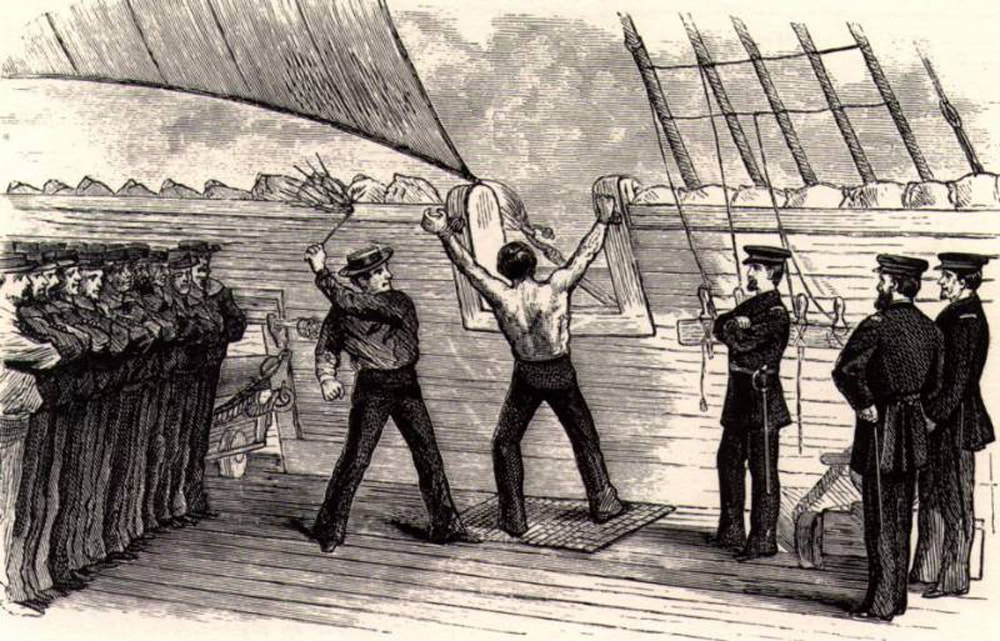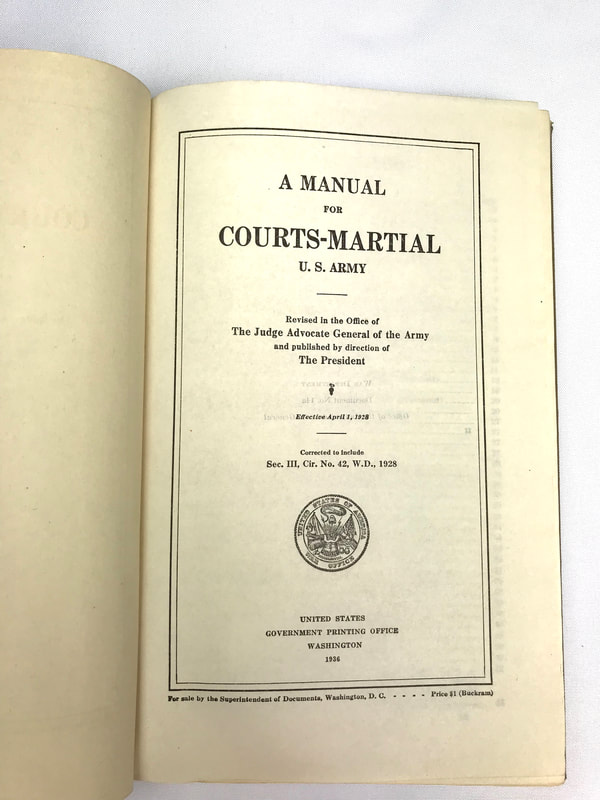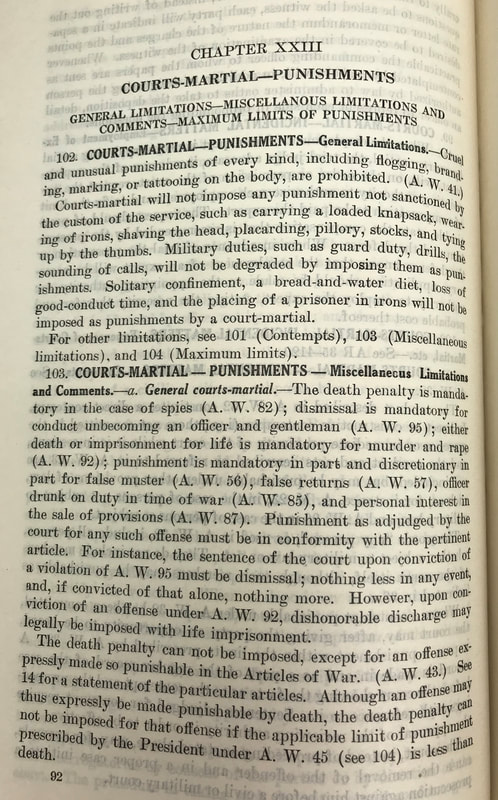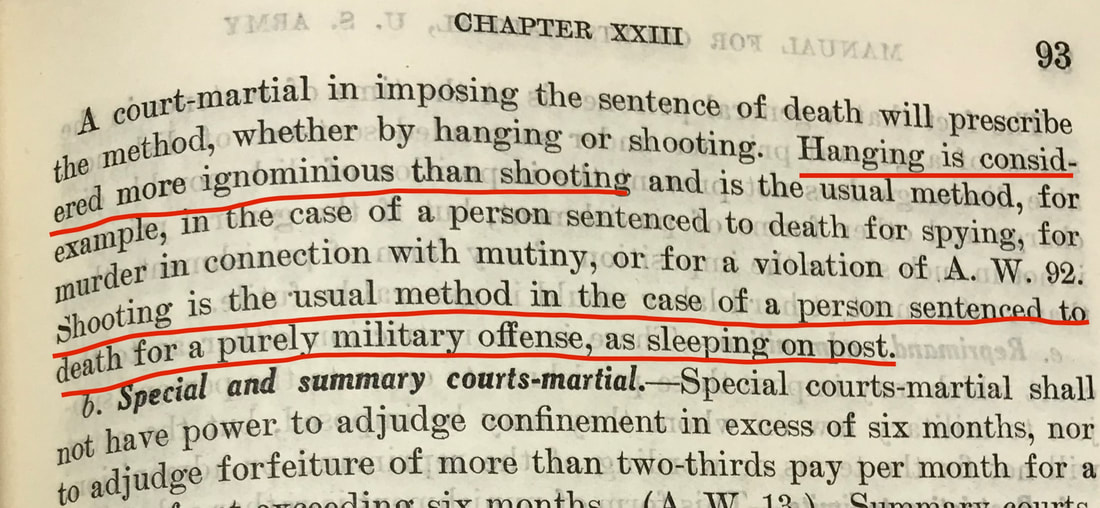|
On this day (05 August) in 1861 the US Army abolished flogging as a form of punishment for Soldiers guilty of breaches of military law or custom. Although often thought of as a primarily naval punishment, Congress had actually prohibited the Navy from flogging Sailors over ten years prior to the Army decision, spurred on in part by popular literary descriptions of the practice. While the Army became kinder and gentler that day, it still maintained a rather harsh system of discipline and possible punishments for those who violated the “punitive articles” of the Articles of War. I’ve collected some legal material from the inter-war and WW2 era, and while the Manual for Courts-Martial (MCM) does indeed specifically prohibit flogging, branding, marking, or tattooing the body (as well as other non-customary punishments), it does allow the death penalty for a wide number of offenses should a military panel wish to impose it. As of 1943 a convicted Soldier could be sentenced to death for: -Desertion (time of war only) -Advising or aiding another to desert (time of war only) -Assaulting or willfully disobeying superior officer -Mutiny or sedition -Failure to suppress mutiny or sedition -Misbehavior before the enemy -Subordinates compelling commander to surrender -Improper use of a countersign (time of war only) -Forcing a safeguard -Relieving, corresponding with, or aiding the enemy -Being a spy during a time of war (non-discretionary: “shall, on conviction thereof, suffer death”) -Misbehavior of sentinel -Murder -Rape In addition, the MCM instructs what form of execution is appropriate for what crime. While a rapist or spy might rightfully meet an ignominious end dangling from a hangman’s noose, a Soldier who fell asleep while on guard duty would likely be given the honor of a firing squad for his military-only offense.
Before 1951 each service maintained their own manuals and procedures for the administration of justice. Following its implementation in 1951 the Uniform Code of Military Justice (UCMJ) became the law of the land and, over the period of decades, evolved. But don’t think the punishments got any less harsh! While some offenses became non-capital or disappeared entirely, two new capital offenses were added and most of the above list retains a maximum punishment of death.
0 Comments
Leave a Reply. |
Jon K.Weapons collector, history buff, Army officer, Pug enthusiast. Archives
December 2020
Categories
All
|





 RSS Feed
RSS Feed
